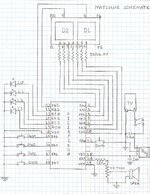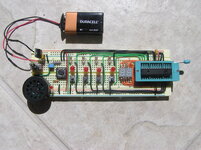jerryd
Member level 2
edaboard,
I'm using a pic18f2550 and have a Micro C program that plays well with the
hardware. I use the 2550 because it has the exact number of I/O ports and
interrupts needed.
Now I'm trying to write the same program in mikrobasic using the same hardware.
I started with a simple light an led but can't get the pic to do anything.
Here's the code:
program NewMatch
' Declarations section
main:
INTCON = 0x00 ' Disable all interrupts
OSCCON = %01110010 ' Select 8MHz oscillator
ADCON0 = 0x00 ' Turn off ADC
ADCON1 = 0 ' Disable Analog functions
PORTA = 0x00
TRISA = 0x00
TRISA = 0x00
TRISB = 0x00
TRISC = 0x00
PORTC = 0x00
while true
portc.1 = 1
wend
end.
I must be missing something simple.
jerryd
I'm using a pic18f2550 and have a Micro C program that plays well with the
hardware. I use the 2550 because it has the exact number of I/O ports and
interrupts needed.
Now I'm trying to write the same program in mikrobasic using the same hardware.
I started with a simple light an led but can't get the pic to do anything.
Here's the code:
program NewMatch
' Declarations section
main:
INTCON = 0x00 ' Disable all interrupts
OSCCON = %01110010 ' Select 8MHz oscillator
ADCON0 = 0x00 ' Turn off ADC
ADCON1 = 0 ' Disable Analog functions
PORTA = 0x00
TRISA = 0x00
TRISA = 0x00
TRISB = 0x00
TRISC = 0x00
PORTC = 0x00
while true
portc.1 = 1
wend
end.
I must be missing something simple.
jerryd

